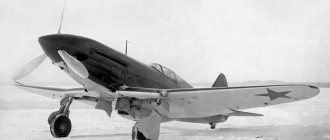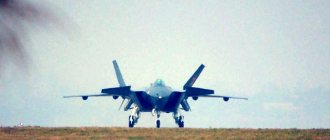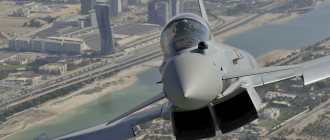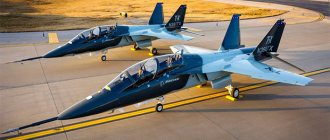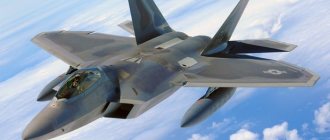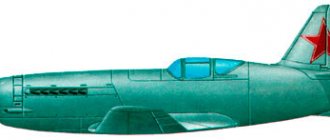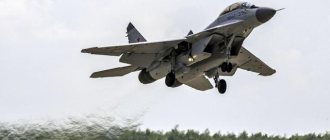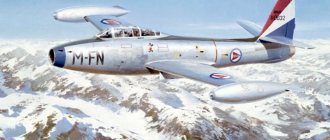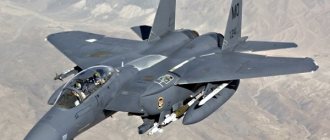The deep modernization of the Su-27UB two-seat training aircraft gave the Russian sky a new model of a multi-role heavy fighter - the Su-30. It was created by Soviet designers, and finalized by Russian engineers, since the last stages of development occurred after the collapse of the USSR.
The Su-30 aircraft was designed for group control of fighters and other types of aircraft. Its functions also include the protection of ground troops and long-distance reconnaissance flights. We invite you to take a closer look at this combat vehicle of the Sukhoi Design Bureau and find out the motive of its origin.
How the Su-30 was created
The main reason for the creation of the Su-30 fighter was the changed concept of air combat due to the development of new technologies. In those years, the dominant place was occupied by the American F-15, which was called the “King of the Skies.” The Soviet Union could not leave such a circumstance unanswered.
The USSR Military Aviation Command issued an order to create a competitive aircraft in a short time. The development was entrusted to the Sukhoi Design Bureau. The basis was taken as a two-seat training model of the Su-27UB, created on the basis of a 4th generation multi-role all-weather fighter.
The development of the project began in the mid-80s.
At that time, technological progress was noticeably changing the face of military aviation. It was decided to install a long-range radio guidance system (AWACS) on the modified fighter. According to the engineers, this would allow one unit of the new aircraft:
- detect targets at long distances;
- destroy the enemy at a considerable distance;
- manage a strike air group.
The combat unit could attack enemy aircraft at a distance of up to 110-120 km. For this purpose, RVV-AE type missiles were used, guided by target illumination. But the advantage was given to missiles with all-aspect guidance. This solution featured a simple “fire and forget” aspect.
Thanks to the introduced technologies, the Su-30 showed excellent results in training battles with foreign competitors. He managed to cope not only with the F-15, but also with the F-16 provided by the US Air Force. In addition, “Sushka” won a mock battle against the British Air Force EurofighterTyphoon fighter, which was considered promising at the time.
The installation of a long-range radar made it possible to use the fighter as an aerial reconnaissance aircraft. The Su-30 could coordinate a flight of Su-34 bombers to eliminate ground and surface targets. The wide combat potential of the new aircraft has led to many requests for purchase from foreign air forces. Upgraded versions of the fighter with the index “K” (commercial) are still successfully sold for export and bear the reputation of reliable combat vehicles.
Russian Aviation
The story about the heavy multi-role fighter of the “4++” generation, intended exclusively for the Russian Aerospace Forces, must begin in the 80s of the last century, when the command of the country’s air defense forces came to the conclusion that it was necessary to have a special combat vehicle that could be used not only as a long-range interceptor fighter, but also as an air command post to control the combat operations of the Su-27 group.
The need for such a machine was dictated by the geographical location and size of the territory of the USSR, the large length of the air borders, and numerous underdeveloped areas along almost the entire perimeter of the land border with a rather sparse network of airfields. In addition, pilots of air defense units who mastered the Su-27 spoke very well of the two-seat combat training version of this aircraft, since it retained all the combat capabilities of a single-seat aircraft, and the presence of a second crew member on board in conditions of long flights during combat duty in the air had great psychological benefits.
In addition, modern on-board radar and electronic systems at that time had such broad capabilities that it was almost impossible for one pilot in a maneuverable air battle to fully realize them, and the need to maneuver, control various weapons, instantly respond and make decisions in a complex, fast-paced tactical situation, created too high a load on the pilot and did not allow him to fully use both his professional capabilities and the capabilities of the fighter.
Thus, there was a need to have a second crew member, in whose cockpit the aircraft controls would be duplicated. Then the first pilot could conduct close combat, control the aircraft and weapons system, and the second pilot could solve long-range combat tasks, monitor the air situation, perform the functions of an air command post - lead group combat operations. The presence of a second crew member was also supposed to improve the combat capabilities of the vehicle and reduce the negative psychological factors affecting the crew during a long flight.
In the USSR there was no machine that could be used as a whole to control group combat operations of fighters in solving problems of gaining air supremacy, and to support combat operations of other types of aviation, and to cover ground troops and objects, and to destroy landing forces in the air, and also for conducting aerial reconnaissance and destroying ground or surface targets.
Work on the creation of a two-seat combat vehicle with the listed capabilities began at the Sukhoi Design Bureau in the mid-80s. The base vehicle for the development of the new project was the Su-27UB, which had a two-seat crew cabin, a large internal fuel supply and ten weapons hardpoints, and to ensure long-term loitering away from airfields, a new aircraft, designated Su-27PU (T-10PU), was decided equip with an in-flight refueling system. Refueling testing was carried out in 1987 on an experimental T-10U-2 vehicle. In the summer of 1988, at the IAPO (Irkutsk Aviation Plant), which produced serial Su-27UB, with the help of employees of the Irkutsk branch of the Sukhoi Design Bureau and local specialists, one of the first serial combat training vehicles, the T-10U-5 (Su-27UB No. 01-02). It became the prototype of the Su-30, receiving the new designation T-10PU-5. The following year, it was joined by the second experimental aircraft T-10PU-6, modified from Su-27UB No. 02-03 (T-10U-6).
Both aircraft were painted in the standard blue color, the first of them had the tail number "05 blue", and the second - "06 blue". Modernization work proceeded quickly, and already in the fall of the same year 1988, IAPO began testing the first of these prototypes.
To control group actions of interceptors, special communication and guidance equipment was included in the avionics, while the group commander had to be located in the rear cockpit of the aircraft, equipped with a wide-format television indicator of the tactical situation, which would receive all the necessary information about the coordinates and characteristics of target movement and position in in the air of the group's aircraft. At the same time, the navigation complex and remote control system on the Su-27PU were modernized.
In terms of aerodynamic configuration, the new fighter was practically no different from its predecessor, the Su-27UB, thanks to which it inherited almost all of its flight characteristics and high operational reliability. Based on the results of flight tests of the modernized vehicles, a government decision was made to launch their serial production at IAPO under the designation Su-30. In 1991, serial production of two-seat Su-30 aircraft began in Irkutsk. The lead vehicle was taken on its first flight by test pilots G.E. Bulanov and V.B. Maksimenkov April 14, 1992
Economic difficulties and the collapse of the USSR had a major negative impact on the Su-30 program. Serial production was carried out very slowly; aircraft were produced and delivered to Russian air defense aviation units in very small quantities.
In the context of the collapse of the economy and the virtual absence of aircraft purchases from the Russian defense department, the Sukhoi Design Bureau turned its attention to the possibility of export deliveries of the Su-30. For these purposes, a modernized commercial version of the Su-30MK was developed - a two-seat attack aircraft intended for delivery to foreign customers. The first flight was carried out in 1993. The fighter's range of weapons was expanded, the maximum take-off weight was increased from 30 to 38.8 tons, the combat load increased from 4 to 8 tons, the airframe life was increased from 2000 to 3000 hours, the engine life was increased from 900 to 1500 hours.
| In July 1998, 12 pilots of the 148th Center for Combat Training and Retraining of Air Defense Aviation Flight Personnel on two MiG-31B fighter-interceptors and four production Su-30s carried out a joint flight experiment in order to explore the possibility of combat use of MiG-31B and Su-30 aircraft in flight for a duration of 10 hours with refueling in the air, performing live firing at the Ashuluk training ground and simulating the interception of “imaginary enemy” aircraft in the north of Russia. In addition to the interceptors, one A-50 long-range radar detection aircraft and two Il-78 refueling aircraft took part in the experiment. A-50s patrolled in a specially designated area, monitored the air situation over a large area and brought all fighters into a single group. A pair of MiG-31Bs, which took off from the airfield in Pravdinsk, north of Nizhny Novgorod, flew in the forward echelon, detecting targets at a distance of up to 200 km with their unique radars and transmitting information about them to the pilots of Su-30 aircraft. The fast and highly maneuverable Su-30s, following 60 km behind the MiG-31B, were ready to immediately attack the enemy. The flight route, 8,500 km long, was laid across the European part of Russia. Over the course of 10 hours, the crews completed three refueling missions. Information support for the research flight was carried out from the A-50. The tasks assigned to the crews were practiced in different combat formations. This and other subsequent experimental flights confirmed the goals that were set for the new combat aircraft: performing a wide range of tasks, based on the destruction of air and ground targets, managing group aviation actions, aerial reconnaissance, conducting combat operations both over land and above by sea. |
In April 1994, a meeting of the Russian-Indian working group on cooperation in the field of aviation was held in Delhi, at which the possibility of producing the Su-30MK fighter in India was considered. Negotiations continued for 2 years, and on November 30, 1996, a contract was signed in Irkutsk for the supply of 40 Su-30MK aircraft to India. The contract specified four stages of delivery over five years, at each of which it was planned to gradually and step-by-step increase the combat capabilities of the aircraft.
At the beginning of the 2000s, there was a transition to the level of a virtually new generation vehicle - the Su-30MKI, the letter “I” indicates that this modification was made specifically for India. This fighter is equipped with a front horizontal tail and AL-31FP engines with controlled thrust vectoring, which can significantly improve maneuverability at low flight speeds. The aircraft is equipped with completely new on-board equipment, thanks to which it is capable of destroying air, ground and sea targets. The first flight of the prototype was carried out in 1997.
Thus, the Su-30MKI Flanker-H is a multifunctional two-seat fighter with a front horizontal tail and an engine with a deflectable thrust vector, with avionics jointly produced in international cooperation between Russia, France, Israel and India, with a new N011M radar with a passive phased array antenna ( PFAR) and an expanded range of air-to-air and air-to-surface weapons.
In March 2012, a contract was concluded between the Russian Ministry of Defense and the Irkut Corporation for the supply of 30 Su-30SM until 2015. As Anatoly Serdyukov, then Minister of Defense, said when signing the contract, “The upcoming entry into the Armed Forces of modern super-maneuverable two-seat Su-30SM fighters will significantly increase the combat power of the Russian Air Force. In addition, the technical capabilities of the aircraft will allow us to achieve a higher level of pilot training, which is especially important in connection with the increase in the volume of purchases of new generation combat aircraft.”
On September 21 of the same year, the first flight of the Su-30SM fighter, built at the request of the Russian Air Force, took place at the airfield of the Irkutsk Aviation Plant. The plane was piloted by Sukhoi Design Bureau test pilot Sergei Kostin (crew commander) and navigator Pavel Malovechko. The flight lasted two hours and went without any comments.
The second production aircraft took off four days later - on September 25. And on November 22, 2012, OJSC Irkut Corporation transferred the first two Su-30SM multirole fighters to the Russian Air Force. On December 5, two new fighters made an independent flight to the State Flight Test Center located in Akhtubinsk, Astrakhan Region. From this date, deliveries of the Su-30SM to the customer - the Ministry of Defense of the Russian Federation - began.
The Su-30SM is the twin brother of the Indian modification of the aircraft, which is the basic platform of a heavy multi-role fighter intended for the Russian Aerospace Forces. The Su-30MKI stands out among its brethren and competitors due to its versatility, implemented in the “open airborne architecture” technology, which allows the introduction of new systems into the fighter’s electronic equipment and the use of guided weapons even of foreign manufacture.
For the Russian Aerospace Forces, the aircraft was adapted in terms of radar systems, radio communications and state identification, an ejection seat and a number of support systems, the fighter is equipped with a phased array radar, engines with controlled thrust vectoring and a front horizontal tail, and is capable of using modern and advanced high-precision weapons of the "class" air-to-air and air-to-surface.
Su-30SM
◄ Back
Forward ►
Image 1 of 16
Su-30SM
What tasks can the Su-30SM solve? This is the destruction of modern and promising fighters in operations to gain air superiority, repelling massive raids by diverse enemy forces, including cruise missiles, while covering troops and infrastructure from air strikes. The combat vehicle provides escort for strike aviation groups in conditions of massive information and fire resistance from the enemy, and is capable of destroying ground-based mobile and stationary targets while solving the problems of isolating the combat area, destroying troop targets and enemy rear lines. The Su-30SM can also operate against surface ships in ocean and sea theaters of war and counter electronic warfare systems. A unique airborne radar station with a phased array antenna provides long-range target detection, and a developed communication system and a second crew member allow the fighter to exercise operational control of a group of aircraft performing a joint mission. The presence of a second pilot and duplication of aircraft controls make it possible to train flight personnel using the entire range of aviation weapons.
The Su-30SM is the world's first serial combat aircraft with super maneuverability. The fighter is made according to the aerodynamic design of a triplane, unstable in the longitudinal channel. To increase lifting force and increase maneuverability, the aircraft is equipped with a front horizontal tail, which automatically deflects to ensure stable flight at high angles of attack.
Another “highlight” is the power plant, consisting of two AL-31FP engines, the axes of which are located at an angle of 32o to each other. Differential deflection by an angle of up to ±16° in the vertical plane and up to ±15o in any direction of two axisymmetric nozzles allows you to control the thrust vector in pitch and yaw. Depending on the upcoming maneuver, the nozzles can deviate synchronously with the horizontal tail surface or separately from it.
Also, a significant contribution to increasing the aircraft’s maneuverability is made by the integrated aerodynamic layout and electronic remote control system.
The radar sighting system, which is based on a phased array radar, is capable of detecting and tracking up to 15 air targets and simultaneously attacking up to four of them. The ability to detect and engage small-sized ground targets is expanded by installing containers with infrared and laser sighting equipment. The helmet-mounted target designation system, as well as a heads-up display and multifunctional liquid crystal color indicators with image mixing capabilities, provide the crew with the highest level of situational awareness.
An integrated optical-electronic sighting and navigation system with a laser inertial navigation system and a satellite navigation receiver (GLONASS) ensures high flight accuracy along the route and access to the target area. The aircraft has the capability of automated flight in various modes, including low-altitude flight, as well as for individual or group combat use against air, ground and surface targets.
The automatic control system, associated with the navigation system, ensures flight along the route, approach to the target, return to the airfield and landing approach in automatic mode.
The combat load of the Su-30SM with a total weight of up to 8000 kg is placed on 12 hardpoints. The aircraft's armament in combination with the avionics system ensures the destruction of air targets, including those with low radar signature, in close combat, the successful conduct of pre-emptive air battles at long distances, the destruction of ground and surface targets using guided and unguided weapons at tactical and operational depths enemy defense.
Cy-30CM - infographics - Source: (c) Military-Political Review, Belarus - www.belvpo.com
In the summer of 2015 in the UK, during the joint exercise Exercise Indradhanush IV, Su-30MKI fighters of the Indian Air Force defeated the Eurofighter FGR4 Typhoon of the Royal Air Force. Four “dryers” and “typhoons” each took part in the training battle. There were no official comments about the results, since the parties were not expected to win or lose. The result was summed up by the head of the group of Indian pilots, Captain Ashu Shrivastav, in an informal conversation with journalists, as reported by The Independent.
According to the commander, his subordinates showed “exceptional drying”, but expressed confidence that Sukhoi aircraft would be “less successful” in longer-range exercises, which their Indian colleagues agreed with.
Nevertheless, Tony Osborne, an expert from the authoritative specialized publication Aviation Week, who followed the exercises, said that the Su-30MKI “in the right hands is undoubtedly capable of giving a powerful rebuff to a serious enemy.”
Rossiyskaya Gazeta wrote about this in August 2015 in its special project “Russian Weapons” (https://rg.ru/2015/08/07/sukhoi30-site.html).
At the end of 2015, the Russian Aerospace Forces were in service with at least three Su-30s, 16 Su-30M2s and 39 Su-30SMs. As of August 2015, the Russian Navy had eight Su-30SM in its Black Sea Fleet. In August and September 2015, the Russian Navy Naval Aviation received new Su-30SM. The 43rd separate attack aviation regiment of the Black Sea Fleet, stationed at the Novofedorovka airfield in Crimea, was replenished with five aircraft with tail numbers 38, 39, 40, 41 and 42 “blue”. And in October, November and December, the 31st Fighter Aviation Regiment, stationed at the Millerovo airfield in the Rostov region, received eight Su-30SM aircraft with tail numbers 03, 04, 05, 06, 07, 08, 09 and 11 “red”. Also, two Su-30SM with tail numbers 03 and 04 “red” were transferred to the 929th State Flight Test Center in Akhtubinsk.
Since September 30, 2015, Su-30SM have taken part in combat operations in Syria against the terrorist group Daesh banned in Russia. The fighters carry out both missions to escort Su-24 and Su-25 bombers, and independently - to destroy the ground infrastructure of this terrorist organization.
Andrey Velichko, January 2016 Photo © Marina Lystseva
- 01/14/2016 The Southern Military District will practice intercepting air targets using the Su-30SM
- 03/18/2016 Why the Su-35S is called the most dangerous fighter in the world
- 02/20/2016 Su-35S multifunctional fighter - five interesting facts
- 01/25/2016 Russia and India agreed to reduce the cost of developing the fifth generation fighter FGFA
( 5 ratings, average: 5.00 out of 5)
Sukhoi Su-30SMS Sukhoi aircraft
Design
The Su-30 fighter has a standard aerodynamic design with an integral layout from the Su-27UB. Trapezoidal three-spar wings with slight extension and smooth connection to the fuselage. Together they form a monolithic body. The aircraft was equipped with a pair of turbofan engines with controlled thrust vectoring. These are dual-circuit engines with AL-31F afterburners. The aircraft engines were housed in two separate engine nacelles located under the center section body.
In the event of damage to one power plant, the Su-30 could freely continue its combat mission.
Between the engine nacelles in the resulting opening there are fastenings for the sequential installation of two guided missiles.
A differentially deflectable stabilizer and two keel rudders form the tail unit. They are attached to the side beams at the rear of the fuselage. The stabilizer consoles are attached to the same beams. The chassis design is three-wheel. The nose gear consists of two wheels. The side supports are single-pitched. Compared to the Su-27UB model, the new aircraft has a reinforced chassis designed for increased take-off weight.
The new design theory made it possible not to use classical mechanical control wiring, previously placed in the longitudinal channel. It was replaced by SDU - an electric remote control system.
Su-30 Dimensions. Engine. Weight. Story. Range of flight. Service ceiling
To combat enemy cruise missiles, the Russian Air Force needed a two-seat long-range fighter. The potential combat capabilities of the Su-27 fighter were clearly not enough. The design bureau decided to use as a basis the two-seat Su-27UB, the serial production of which was mastered at the Irkutsk aircraft plant. Work on the aircraft began in 1986. During the testing of the experimental Su-27UB, the in-flight refueling system was already tested on it. On the starboard side, at the level of the canopy canopy, an L-shaped fuel receiver rod was installed. On the modernized “spark”, called the Su-27PU, the living conditions in the cockpit were also somewhat improved.
Technical characteristics in comparison with foreign analogues
Since the Su-30 fighter was a response to a potential enemy with the F-15 and EurofighterTyphoon dominating the air, we will conduct a comparative analysis of the performance characteristics with the parameters displayed in the table.
| Flight performance | Su-30 | McDonnell Douglas F-15 Eagle | EurofighterTyphoon |
| Manufacturer country | USSR/Russia | USA | Great Britain |
| Crew, people | 2 | 1 | 1 |
| Length, m | 21,9 | 19,43 | 15,96 |
| Height, m | 6,36 | 5,63 | 5,28 |
| Wingspan, m | 14,7 | 13.05 | 10,95 |
| Weight, t | 18.8 (empty) 38.8 (limit) | 12.7 (empty) 30.8 (limit) | 11 (empty) 23.5 (limit) |
| Aircraft engines | TRDDF AL-31F (2 pieces) | Pratt & Whitney F100-PW-100 (2 pcs) | Eurojet EJ 200 (2 pcs) |
| Thrust (kgf) on one engine | 12,500 (afterburner) 7,770 (without afterburner) | 10,810 (afterburner) 6,655 (without afterburner) | 9 180 (afterburner) 6 120 (without afterburner) |
| Maximum speed, km/h | 1,350 (near the ground) 2,350 (at altitude) | 1,450 (near the ground) 2,650 (at altitude) | 1,400 (near the ground) 2,450 (at altitude) |
| Flight range, km | 1,270 (near the ground) 3,000 (at altitude) | 1,967 (near ground) 5,750 (at altitude) | — 3,790 (at altitude) |
| Practical ceiling, m | 17 300 | 20 000 | 19 812 |
| Combat equipment | Standard air cannon GSh-30-1 (30 mm), 12 hardpoints, R-77, R-27, missiles (6 pcs), 0.5 t bombs (8 pcs), KMG-U containers (7 pcs), NAR S blocks -13 (4pcs). | General Electric M-61A1 air cannon Gatling type (20 mm), AIM-9L/AIM-9M missile launcher (4 pcs), AIM-7F/AIM-7M missile launcher (4 pcs), AIM-120 AMRAAM missile launcher (8 pcs) | Mauser air cannon BK-27 (27 mm), RVV AIM-9 Sidewinder, RVV AGM-84 Harpoon, Air bombs: Paveway 2, Paveway 3, LITENING laser targeting container |
The Russian fighter is larger and heavier than its competitors. Perhaps that is why it is inferior in speed and flight range. However, the thrust of the power plant is higher than that of foreign analogues.
What is the new aircraft armed with?
- The latest airborne radar system Bars-R. Allows you to identify and automatically track several targets at once.
- Guided missiles. Class - “air-to-air” or “air-to-surface”.
- Guided and unguided bombs. There are a total of 12 pylons for their suspension.
- The maximum weight of weapons on board is 8000 kg.
- For close combat, it can also use the 30-mm built-in GSh-30-1 cannon, which is typical for all domestic combat aviation.
Equipped with a wide range of different weapons, the fighter is capable of solving almost all typical tasks: from maneuverable close combat to long-range contact, when the enemy is destroyed without visual contact with him.
The guided and unguided weapons of the Su-30 SM make it possible to destroy the enemy on land and on water. In terms of the totality of all its characteristics, this fighter rightfully outperforms even many new products of the foreign military-industrial complex, even if its design is already many years old! Considering that this technology, for the first time in the history of Russian aircraft construction, used an open scheme for constructing on-board weapons, the modernization of the Su-30 SM, the characteristics of which we are considering, is noticeably simplified.
Combat use
The main customer for the new fighter was air defense aviation, since the technical characteristics of the aircraft made it possible to carry out interceptions and patrols at long distances. But in the early 90s, the military doctrine changed again and the Air Force began to receive high-precision missile launchers of such classes as air-to-surface and air-to-ship.
Almost all major weapons manufacturers have begun to develop launch vehicles for this type of missile. Sukhoi Design Bureau was no exception. Thus, mass production of the Su-30 did not develop. Aircraft were mainly produced for export.
In 1998, a study was conducted on the possibility of combat use on a long 10-hour flight with refueling. According to the flight plan, the test was carried out by 4 production Su-30s and two MiG-31B interceptors. The battle group was commanded by Colonel Martin Karapetyan. The planes flew more than 8,000 km and refueled in the air three times.
In the summer of 1999, in the joint command exercises of the Russian Air Force, Su-30 fighters carried out the task of escorting Tu-160 and Tu-95MS strategic aviation bombers.
The flight was carried out north to the island of Novaya Zemlya. A little earlier, in April, the planes made similar flights, staying in the air for 8 hours and carrying out 12 refuelings. At the moment, 4 Su-30 SM aircraft are on combat duty in Syria. They are assigned to the mixed 120th regiment of the Russian Aerospace Forces and have been on military duty since 2015.
How does the new car differ from its predecessor?
So, what are the distinctive features of the new fighter, and how does it differ from its predecessor? Here is a short list of them:
- For the first time, an engine with variable thrust vectoring was installed on a mass-produced fighter, and a remote control system operating as a single complex was also installed on the vehicle. This is what made the new car so maneuverable.
- In addition, avionics systems were integrated, both imported and domestically produced. The machine was, to some extent, created “international”, since its components were obtained from 14 manufacturers from six countries.
- A radar with a rotary phased array is also another innovation, which until then was uncharacteristic of the domestic aircraft manufacturing complex. Finally, the Su-30 SM aircraft received a completely new ejection seat. What’s especially nice is that it’s a Russian design.
- The range of missiles used has been significantly expanded, which makes the new aircraft a much more versatile and formidable weapon for the domestic air force.
A mark on aviation history and gaming
The Su-30 became the ancestor of modified versions of the fighter, which are produced to this day. According to information from 2016, the Russian Aerospace Forces have the following models in its fleet: Su-30 (3 units), Su-30M2 (16 units), Su-30SM (39 units). The Black Sea Fleet has 8 Su-30SM fighters. 5 Su-30SM aircraft are deployed in Crimea. The Su-30 M2 aircraft was created on the basis of the Su-30MK2 export aircraft. The fighter is equipped with high-precision weapons.
The creators of electronic games did not ignore the Su-30 either. By controlling a flight simulator, you can perform combat missions and make your imaginary contribution to the fight against terrorism. The most popular game is called SU-30. Judging by the description and user reviews, the features of naturalized controls allow us to give the shooter the highest rating among other analogues. There are also mobile versions - scrolling shooters SU-30.
The Su-30 fighter was produced during the collapse of the USSR.
Despite the lack of funding, aircraft designers created another masterpiece for Russian aviation. For more than 25 years, various modifications of the combat "Sushka" with an index of 30 have been in combat service with the Russian Air Force and more than 10 other countries.
A series of disasters from 1999 to 2022 did not at all spoil the aircraft’s reputation. In most cases, the cause of accidents was human factor or force majeure. For example, the last plane crash on May 3, 2018, occurred due to a bird hitting the power plant (according to the official version). Unfortunately the pilots died. But cases with tragic outcomes are rare.
